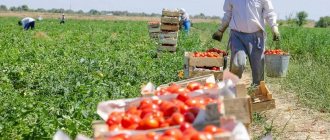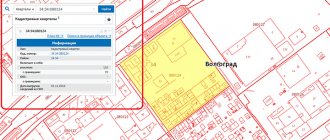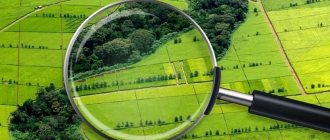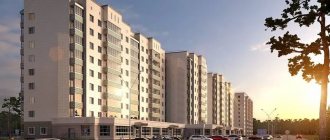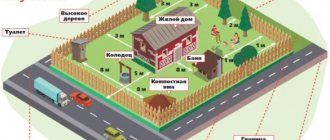The process of building factories and factories became a logical continuation of the existence of small workshops, which at a certain time ceased to satisfy the demands of goods manufacturers.
As a result, we now have huge production complexes, comparable in size to entire towns. It is clear that land resources are needed for the construction of industrial enterprises, and they were allocated as a separate category for special purpose.
Dear readers! Our articles talk about typical ways to resolve legal issues, but each case is unique. If you want to find out how to solve your specific problem, please contact the online consultant form on the right. It's fast and free! Or call us at :
+7 Moscow, Moscow region
+7 St. Petersburg, Leningrad region
8 Federal number (free call for all regions of Russia)!
Industrial land - what is it?
According to the Land Code, federal laws and laws of the constituent entities of the Russian Federation, industrial lands are those land resources that are located outside the boundaries of settlements and are used or intended to support the activities of organizations and the operation of industrial facilities.
These areas can accommodate various workshops, factory premises, as well as administrative buildings necessary to ensure the operation of enterprises and organizations.
As we know, industry can be manufacturing or mining. Accordingly, mining industry facilities also occupy certain land plots on which mineral resources (oil and natural gas) are extracted and ore and non-metallic minerals are produced.
Owners of industrial land can be both legal entities and individuals. According to the Land Legislation of the Russian Federation, such lands can be transferred both into state ownership and into communal or private ownership.
When organizing industrial production, it is necessary to focus on Article 8, Article 78 and Article 88 of the Land Code of the Russian Federation, which specifies the conditions for carrying out this process legally, without prejudice to the population and ecology of a certain territory. The possibility of transferring land for industrial production is carried out with the participation of local governments.
Land resources for industrial purposes cannot be located near residential properties. In this territory it is allowed to create your own infrastructure to ensure the optimal functioning of industrial facilities.
When selecting sites, soil fertility is not taken into account, since the land is not intended for the development of agricultural industries.
What are reserve lands?
What applies to forest fund lands, read here.
Read about the types of permitted use of settlement lands at the following link:
The following factors are of great importance when choosing a land plot for the location of construction projects:
- terrain;
- climatic conditions;
- proximity to transport routes and large populated areas.
Since the purposes for using land resources are completely different, it became necessary to distinguish certain categories.
There are seven such categories:
- industrial lands;
- land for mining;
- transport sections;
- land for the location of nuclear energy facilities;
- areas intended for defense and security purposes;
- communications;
- areas for space activities.
The rapid growth of the economy and the development of industrial enterprises lead to a certain shortage of industrial land. Today there are about 18 million hectares of such land in Russia.
There is a tendency towards a gradual increase in the area occupied by production complexes. Most often, such an increase occurs due to the transfer of certain areas to the industrial category.
The constantly growing population of Moscow, the Moscow region and other large cities leads to a decrease in industrial land. In this case, the so-called anthropogenic factor is triggered.
We can say that lately there has been a so-called hunt for land. Of course, land in the Moscow region, in the 30-50 kilometer zone from the Moscow Ring Road, is in particular demand.
By removing such lands from the agricultural category, investors receive quite large profits. Neither bureaucratic difficulties, nor environmental requirements, nor the human factor stand in their way.
Characteristics of the production facility
Production facilities can be characterized by capacity indicators, functionality, output volumes, etc. As for capacity, it is determined by the level and quality of technical support. In particular, one of the criteria may be the power potential of the equipment. In the field of mechanical engineering, production facilities, for example, are provided with machines for the production of metal parts - the speed of production, accuracy and complexity of processing will depend on the power of this equipment.
Functionality can characterize objects in terms of their ability to work with different operations. Here we can mention full and partial cycle enterprises. In the first case, the production process can provide, for example, the manufacture of parts from the stage of primary processing of raw materials to the release of a ready-to-use product. The characteristics of industrial and social objects may differ in terms of the approach to assessing functionality. Social welfare, oriented towards the provision of services, largely depends on the level of infrastructure. If the direct production of products is characterized by the same output volume, then, for example, in the field of medical services such properties as the number of beds, the number of doctors of different specializations, and the range of diagnostic operations and procedures provided will play a role.
Sale of industrial land
The process of selling industrial lands, their rental, purchase and sale and other operations are possible only legally. Only legal owners, who can be both individuals and legal entities, can carry out these processes.
When it comes to the use of land, its intended purpose is very important. That is, if industrial land is intended for the construction of warehouses, then under no circumstances can a gas station or service station be built on this territory by the new owner.
It is the issue of the intended purpose of land that can become a stumbling block between a businessman and the legal use of industrial land.
Businessmen who buy and sell industrial land should be very careful about studying the territory itself. It is advisable to carefully conduct an expert assessment of whether the necessary infrastructure, communications, water supply, electricity, and so on are available, because by purchasing a not very expensive plot, you can subsequently spend a lot on related construction.
At the same time, one should not lose sight of the excessively time-consuming paperwork involved in obtaining permits from various authorities.
On-site production system
If we consider the concept of a production facility from an administrative and economic point of view, then the organizational system of the enterprise will be the main element of the definition. In accordance with the production and organizational system, functional, logistics and economic models of activity are being developed. Based on the prepared models, schemes for the supply of raw materials, control of products at release, a work shift plan, a maintenance schedule, etc. are organized. In a broader sense, production facilities from the point of view of the organizational system can be represented as a means of creating products with certain parameters - quantitative, qualitative, functional criteria. The production system itself is characterized by such properties as flexibility, redundancy and sufficiency, structural integrity, etc.
Difference between production and non-production objects
Boundaries can be drawn between industrial and non-productive objects according to several parameters. For example, production assets are directly based on technical means, thanks to which the conditions for the production of certain products are created. Moreover, industrial facilities in most cases are focused on making a profit.
As for non-productive assets, they are intended for maintenance. These may be services provided in the same areas of healthcare, public utilities, education and culture. And unlike enterprises producing material products, they most often do not make a profit or operate at the level of no losses. But there are also aspects of activity that combine objects of housing, civil and industrial purposes in different areas. Similar features include the use of equipment, technical tools and equipment. For example, employees of organizations that maintain jobs and structures can use the same equipment as workers in manufacturing plants.
Classification by areas of activity
Each branch of human economic activity represents one or another production. The main list of industrial facilities in accordance with this classification can be presented as follows:
- Metallurgical enterprises.
- Woodworking and furniture factories.
- Pulp and paper production.
- Glass and porcelain factories.
- Textile production facilities.
- Machine and machine tool factories.
- Production of building materials.
Agricultural production areas can be considered separately. This area includes livestock farming, crop farming, beekeeping, mushroom growing, etc. In each area, special production facilities are used, the classification of which will involve division according to technical and design solutions and the nature of operation. Farms, storage facilities, silos, greenhouses, ponds, pastures, forests, etc. can be used as elements of agricultural production infrastructure.
Hazardous production facilities
These facilities include enterprises whose operation involves a high risk of accidents. This group also includes industries whose activities involve the processing of chemically hazardous substances, oxidizing solutions and mixtures, explosive and flammable materials. That is, these are objects where the consequences of accidents can cause great harm to material property and human health. In extreme cases, we can talk about the risks of environmental disaster. Such threats can be minimized by systematically assigning those responsible for a hazardous production facility and individual areas of its operation. Typically, the main responsibility falls on the chief engineer, who, in particular, is responsible for the safe operation of the enterprise, communications management, maintenance of raw materials, etc. An electrician is responsible for electrical support, including fire alarms, and the technical condition of the equipment is checked by the chief mechanic. Taken together, such coverage of various components of the enterprise’s infrastructure allows minimizing the risks of serious accidents, as well as increasing key production indicators.
Design of production facilities
The development of a design solution is carried out on the basis of initial data. These data are obtained as a result of the analysis of economic, technical and structural models of the functioning of the enterprise. At the first stage, a list is compiled indicating the technological processes that the facility will, in principle, have to perform. These can be processing operations (mechanical, thermal, laser), compression, deformation, assembly and others. Next, requirements are drawn up for the equipment that will implement these operations, after which a map of their placement is formed. At the same stage, documents with technical parameters and layout of buildings and structures should be prepared. In accordance with the standards, a capital construction facility for industrial purposes must meet not only the requirements for the placement of equipment, but also meet optimal working conditions. The engineering support of the facility is of considerable importance in this regard. The project describes the requirements and recommendations for the characteristics of ventilation systems, lighting, sewerage, dust extraction and other devices that will create conditions for efficient, comfortable and safe work activities.
Classification by service life
There are temporary and permanent production facilities. As for temporary facilities, these include seasonal or mobile complexes that operate at certain intervals. Such structures are characterized by mobility, functionality and low power potential. Temporary facilities also include permanent permanent buildings in which the production model is changing. That is, a new nomenclature is established at the facilities of the same enterprise in different periods. Sometimes, to change the production system, technical equipment is completely updated. Permanent production facilities, the classification of which implies the separation of full-cycle and incomplete-cycle enterprises, are characterized by the presence of a capital construction base. These are reliable structures oriented for a long service life with a certain nomenclature. And if temporary facilities, as a rule, provide for partial-cycle production, permanent buildings can also carry out a full cycle of operations due to their higher capacity potential.
Tax
IMPORTANT! An industrial site will cost less than an agricultural site. The cost greatly depends on its location in a particular region, proximity to population centers, and the absence or presence of communication equipment.
For 2015, the tax rate was 1.5% of the value of the site indicated in the cadastral map, but the region in which it is located may introduce a coefficient that reduces it. You can find out more about the reduction factor and its availability at the administration of a particular district.
Due to the fact that industrial plots are the basis of absolutely any production, their price will increase every year.
The cost according to the cadastre in industrial territories, which are authorized by local governments, can reach a value higher than the market value, which often forces entrepreneurs to apply to the court for a decision to reduce the price.
